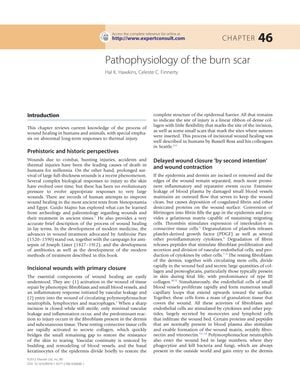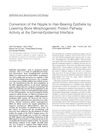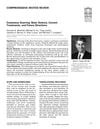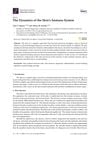Pathophysiology of Burn Scars
January 2012
in “
Elsevier eBooks
”

TLDR Burn scars form abnormally due to changes in wound healing, and more research is needed to improve treatments.
The document from January 1, 2012, examines the pathophysiology of burn scars, focusing on the healing process and the development of abnormal scar types such as hypertrophic scars and keloids. It explains that hypertrophic scars, which are elevated, firm, and itchy, contain higher levels of type III collagen, fibronectin, and hyaluronic acid, and are more vascular and cellular than normal scars. These scars also show a different phenotype in fibroblasts, which secrete collagen more rapidly and have a reduced response to IL-6. Keloids, on the other hand, are more persistent and likely to recur after excision, and are more common in individuals of African descent. The document also discusses the challenges in studying hypertrophic scars due to the lack of suitable animal models and the potential of cell culture models and certain animal models to provide insights. It highlights the importance of understanding the systemic and local inflammatory responses in hypertrophic scarring and suggests that an abnormality in the control of normal wound healing processes leads to these scars. The document concludes that further research is crucial for developing more effective treatments for hypertrophic scarring.






